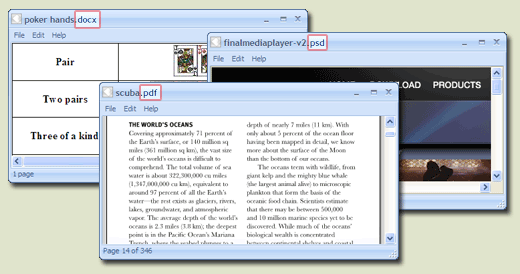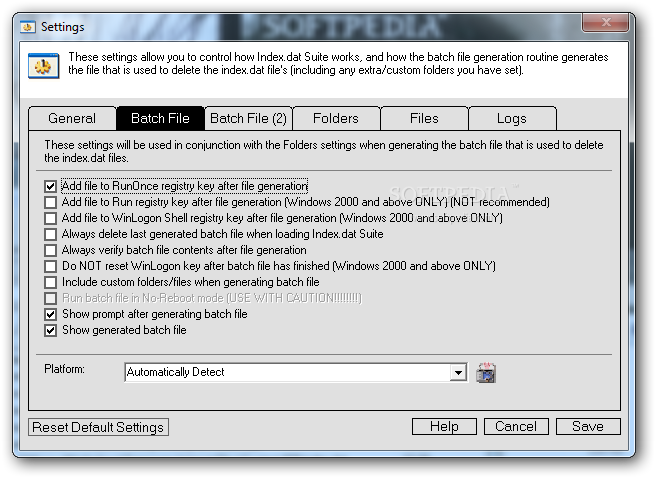

- #Index.dat file reader free windows how to#
- #Index.dat file reader free windows verification#
- #Index.dat file reader free windows windows#
#Index.dat file reader free windows verification#
(-nodebuglogfile to disable default: debug.log) -includeconf= Specify additional configuration file, relative to the -datadir path (only useable from configuration file, not command line) -loadblock= Imports blocks from external file on startup -maxmempool= Keep the transaction memory pool below megabytes (default: 300) -maxorphantx= Keep at most unconnectable transactions in memory (default: 100) -mempoolexpiry= Do not keep transactions in the mempool longer than hours (default: 336) -par= Set the number of script verification threads (-8 to 15, 0 = auto, Specify pid file. Relative paths will be prefixed by a net-specific datadir location. debuglogfile= Specify location of debug log file. In addition, unused mempool memory is shared for this cache (see -maxmempool). (default: nf) -daemon Run in the background as a daemon and accept commands -datadir= Specify data directory -dbcache= Maximum database cache size MiB (4 to 16384, default: 450). Relative paths will be prefixed by datadir location. (default: 0) -conf= Specify path to read-only configuration file.

Automatic broadcast and rebroadcast of any transactions from inbound peers is disabled, unless the peer has the 'forcerelay' permission. blocknotify= Execute command when the best block changes (%s in cmd is replaced by block hash) -blockreconstructionextratxn= Extra transactions to keep in memory for compact block reconstructions (default: 100) -blocksdir= Specify directory to hold blocks subdirectory for *.dat files (default: ) -blocksonly Whether to reject transactions from network peers. If is not supplied or if = 1, indexes for all known types are enabled.
#Index.dat file reader free windows windows#
The location of index.dat files depends on the version of Windows and whether or not you are using User profiles.GitHub - heru299/script-copy: -? Print this help message and exit -alertnotify= Execute command when a relevant alert is received or we see a really long fork (%s in cmd is replaced by message) -assumevalid= If this block is in the chain assume that it and its ancestors are valid and potentially skip their script verification (0 to verify all, default: 0000000000000000000b9d2ec5a352ecba0592946514a92f14319dc2b367fc72, testnet: 000000000000006433d1efec504c53ca332b64963c425395515b01977bd7b3b0, signet: 0000002a1de0f46379358c1fd09906f7ac59adf3712323ed90eb59e4c183c020) -blockfilterindex= Maintain an index of compact filters by block (default: 0, values: basic). If using Windows XP, you can also follow these instructions while in safe mode with command prompt.
#Index.dat file reader free windows how to#
If you do a search on the net for how to erase Index.dat files, you will find various free third party utilities which can be used.

However, if Secure Deletion is enabled in CCleaner then this will effectively wipe the contents of this file although the size will continue to increase with use.Īlthough the Wikipedia write up references that a large index.dat file can impair performance, I have not found that to be true in any significant degree which would cause concern. Various free programs (among them Red Button, CCleaner, Index.dat Suite), can completely remove index.dat files until they are recreated by Windows, though CCleaner, and perhaps the others, does not delete the hidden index.dat file in the Temporary Internet Files folder, which contains a copy of the cookies that were in the Cookies folder. This is because windows prevents open or "locked" files from being deleted. One of the groups' main complaints is that the index.dat files cannot easily be deleted. The information contained in an index.dat file can be considered private to the user. Internet privacy groups contend that the use of index.dat files in the Windows operating system is an invasion of users' privacy. Separate index.dat files exist for the Internet Explorer history, cache, and cookies. Its purpose is to enable quick access to data used by Internet Explorer.The index.dat file is user-specific and is open as long a user is logged on in Windows. It is a repository of information such as web URLs, search queries and recently opened files. Index.dat files are used by Internet Explorer and Windows to store history, Internet cache, cookies, UserData records and other information about what you have done in Internet.


 0 kommentar(er)
0 kommentar(er)
